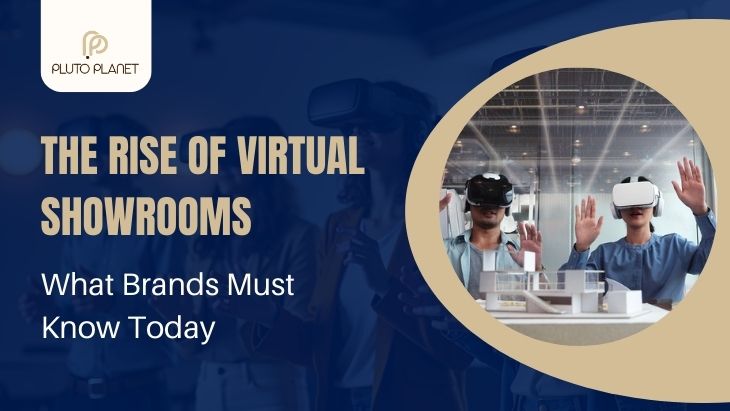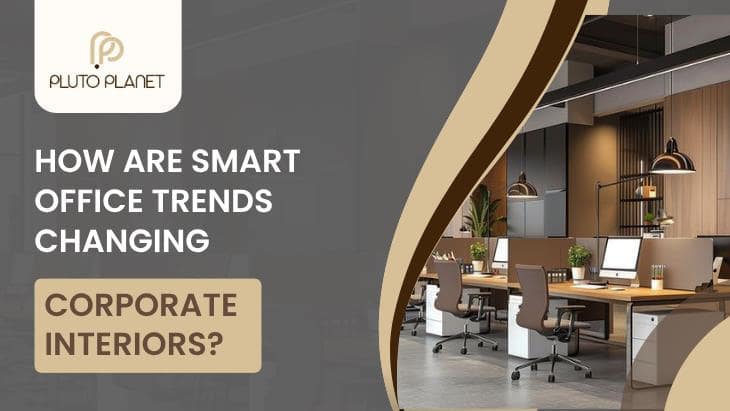The world market is changing at a speed never experienced before, and the emergence of virtual showrooms is one of the most interesting changes. These online environments are transforming the manner in which customers explore products, engage with brands and make purchasing decisions. The main idea of a virtual showroom is that it is a 3D, immersive, interactive online space where the customer can view the collection of a brand anywhere on the planet, as he/she would in a brick-and-mortar store.
Virtual showrooms have become extremely popular as the tastes of consumers change and the digital-first experience becomes the central one. The current customers are demanding speed, convenience, personalization and visually rich experiences. Virtual showrooms allow one to find out the issues of modern office design, compare the furniture items, or picture the corporate decor, and it allows doing it all in a straightforward and very engaging way.
Several industries, such as fashion, automotive, home decor, real estate, and even office interior design brands, are embracing virtual showrooms as a means of displaying their products in terms of immersion. The change does not simply stop at being a trend; it is a part of the overall growth strategy as brands vie over the global presence and interest in the form of excellent customer interactions.
What Are Virtual Showrooms?
The virtual showroom consists of an online 3D space where the user can view products by using an interactive interface, including 360-degree rotation, zoom, animation, and even augmented reality. Imagine that it is a complete digital store, one that simulates the facet of moving around in a brick-and-mortar showroom, only that it is not limited by place, time or space.
Virtual showrooms are not just another variant of e-commerce or merely listing the products. Whereas e-commerce provides mere pictures and text, virtual showrooms provide hypnotic experiences. They integrate AR/VR, 3D visualization, and digital tours as well as real-time interaction to give the customer a sense of scale, proportion and context.
This is particularly helpful in the virtual showrooms of the industry, like the office interior design and furniture, where the customer would like to view the product in a real scenario and how it will appear and feel. There is also a possibility to combine the elements of interactivity, e.g. the virtual try-on, real-time customization and guided walkthrough to make the brands even more interactive.
What Is the Reason Virtual Showrooms Are on the Increase? Major Drivers
1. Digital transformation After the pandemic
The pandemic changed the habit of the customers permanently. With the online interaction being the main form of shopping, the brands noticed that they should have more engaging experiences. Virtual showrooms were a significant solution, and they enabled the customer to view the products without necessarily going to the physical location. The digital behavior is not weaker nowadays, and the use of virtual showrooms is growing.
2. Immersive Technology Development
AR/VR, 3D modeling, AI assistance, and 360 videos have become cheaper and more available. These technologies also provide such realistic images of the products that the customers are able to interact with the product in a manner that is not achievable by traditional online shopping. In the case of industries like modern office design, this will enable the customers to see how the workspace interiors, furniture, lighting, and interior decorations will appear in their real working environment.
3. Global Market Reach
Internet showrooms eliminate boundaries. Customers in any part of the world can experience the product range instantly regardless of whether the brand is in Dubai, New York, or Mumbai. This is particularly useful to luxury brands, real estate firms or design firms that would wish to appeal to international clients.
4. Cost Efficiency
It can be quite costly to keep big physical showrooms. Virtual showrooms minimize these overheads; no large physical space, product samples, or multiple store designs are required. Digital updates can be made in a matter of minutes.
5. Increased Customer Interaction
Virtual showrooms enable:
• Interactive product demos
• Personalized walkthroughs
• Live customization facilities.
This is the level of engagement that will result in greater customer excitement and exploration, which will lead to better decision-making and improved conversions.
The important characteristics of the modern virtual showrooms
The modern virtual showrooms come with high functionality levels, and they include:
• Zoom, rotation and breakdown views of the products in 3D.
• Online clothing, furniture, and interior virtual try-ons and simulations.
• On-the-fly customer service and AI-based assistance.
• The integration of e-commerce with an easy add-to-cart and checkout.
• Room visualization software, in particular, which is useful with office interior design companies.
• Heatmap & customer analytics to monitor customer behavior.
These functions are very convenient and exciting, and virtual showrooms are very effective in influencing the choice of purchases.
Benefits for Brands
1. Better Customer Experience
Virtual showrooms are more interactive, as customers get to know about products from all angles. This helps it to lessen confusion and increase confidence, particularly in purchasing high-valued products such as office furniture or decorations.
2. Higher Conversion Rates
Customers are able to engage more with products and therefore feel knowledgeable and more confident in their decisions. This generates high conversion rates and low returns.
3. Scalability and Flexibility
Online worlds can be updated with ease. Brands are able to add new collections, remodel layouts, or add theme-related things without needing to work on them or expend any money.
4. Competitive Advantage
There are brands that make use of virtual showrooms. They provide a hi-tech experience to the contemporary consumers who can appreciate convenience and innovation. This brand preference can be affected by the difference in competitive industries like modern office design.
5. Sustainability
Virtual showrooms save a lot of waste; there are no physical samples, no printed catalogs and less carbon is used in transportation. This is in line with sustainability in the world.
Industries Changing with Online Showrooms
Virtual showrooms are transforming a large variety of sectors:
• Fashion & Apparel: Virtual try-ons and 3D catwalks.
• Luxury Brands: Special online stores of high-end clients.
• Car: Interactive dashboard, virtual automobile tours, and custom building.
• Home Décor Furniture: Space Planning and Room Visualization.
• Real Estate: 360 property tours and online staging.
• Electronics: Live demonstrations of appliances and gadgets.
• B2B & Manufacturing: The presentation of large-scale equipment online.
Virtual showrooms are also used by even interior design companies to display workspace layouts, modular furniture, and design themes.
Things and Problems that Brands Face
As much as the advantages are huge, the brands should take into account:
• Initial expenses of constructing quality showrooms.
• The need to have detailed 3D assets that are time-consuming and expert-oriented.
• Mobile responsiveness, which guarantees easy functionality on any device.
• Learning curve of the customers, particularly the first-time users.
• Constant maintenance, content updates, and technical support.
• User interactions and personal data security, privacy.
An effective virtual showroom has to strike the right balance between visual quality, speed and usability.
The Successful Virtual Showroom Implementation of Brands
1. Begin with High-Impact Products
The brands must start with the products that customers are the most reluctant to purchase online, e.g. furniture, pieces of furniture, or complicated machine parts.
2. Invest in 3D visualization, which is realistic.
Good quality images create credibility. The experience is realistic due to realistic texture, animation and lights that give confidence to the purchase, particularly in areas such as office interior design.
3. Integrate with E-commerce
The magic of a virtual showroom is found when the customer can pass through exploration and purchase smoothly. Integration provides flawless checkout.
4. Enhance Experiences with Analytics
Heatmaps, recordings of sessions, and analysis of user behaviors assist brands in optimizing the virtual showrooms so that they can increase their conversion.
5. Market the Virtual Showroom
Visibility is critical. Brands should use:
• Social media ads
• Email campaigns
• Influencers
• QR codes in physical stores
• Website pop-ups
The better informed the showroom is, the better the traffic and interaction it will bring.
The Future of Virtual Showrooms
The future is looking very bright. Very soon, there will be virtual showrooms that will contain:
• Artificial Intelligence-based customized consultations.
• The showroom experiences of the metaverse.
• Holographic product demos
• AR glasses and AI devices Spatial computing integrations.
With the changing technology, virtual showrooms will grow increasingly engulfing and interactive and become a key to world trade.
Conclusion
Virtual showrooms have ceased to be an innovative tool and are now a necessary resource of a brand that desires to compete in a digital-driven world. They provide immersive, convenient and interactive experiences that are favorable to the modern consumers. With industries going more digital-first, virtual showrooms provide brands with the benefits of being able to reach people globally, having cost-effectiveness, and offering greater engagement with their customers.
In the case of brands in the industry, such as Office Interior Design and Modern Office Design, virtual showrooms are the ideal place to present layouts, furniture, and workspace plans in an easily understandable and impressive way.
Brands should adopt virtual showroom technology in the present day and create digital experiences that keep pace with the demands of the future customer in order to remain competitive.
We are PlutoPlanet, and we are here to assist you with the creation of immersive, future-proofed digital experiences.
Contact PlutoPlanet to make your virtual showroom a reality.
FAQs:
1. What is a virtual showroom?
A virtual showroom is a 3D digital environment where customers can explore products interactively.
2. How do virtual showrooms help interior design brands?
They enable clients to visualize designs, layouts, and furniture in lifelike digital spaces.
3. Can virtual showrooms work on mobile devices?
Yes, most modern virtual showrooms are optimized for mobile, tablet, and desktop.
4. Are virtual showrooms expensive to create?
Costs vary depending on customization, 3D modeling, and features, but long-term savings are significant.
5. Do virtual showrooms increase customer conversions?
Yes. Immersive visuals and interactive tools reduce doubts and lead to faster, more confident decisions.









Leave a reply